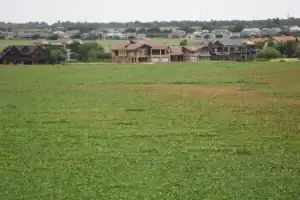The Magaliesberg forms part of a protected biosphere region, but continues to be ravaged by illegal loggers who harvest wood to be sold to consumers.

Illegal tree felling and wood harvesting in the Hartbeespoort Dam area continues to decimate the picturesque landscapes. But, until the socio-economic challenges are combated in the region, trees will continue to be felled “with impunity”.
This according to terrestrial ecologist for the Department of Economic Development, Environment, Conservation and Tourism, John Power.
Local land owners, along with members of the Magaliesberg Biosphere organisation, are concerned about the significant ecological threat to the region as trees have been cut down illegally for years.
The wood is sold as firewood at various locations around the Hartbeespoort Dam.
The Pelindaba Road intersection is a hotspot for wood vendors and in February, The Citizen found that Mopani, Rooibos and Sekelbos are the most popular species on sale as firewood.
Vendors explained that hardwood takes seven days to dry, and that wood harvested from nearby areas – usually illegally – is routinely dropped off at the intersection.
Driving past Hartbeespoort’s curio market revealed a father and son team who cut sekelbos trees down to earn money to survive.
Their makeshift workshop in the bushes just off the road was the location where the father cut trees down every day, weather permitting. His son sells the sekelbos wood to passersby as firewood, and offcuts are sold to nearby curio markets, where an assortment of knobkerries and stylised animals are crafted for the tourism market.

Illegally harvested wood being sold around the Hartbeespoort Dam. Picture: Nigel Sibanda
The fact that illegally harvested wood is ending up in curios, sold to consumers, is not a well-known fact, but the wood cutters confirmed to The Citizen that only a small portion of their harvested wood is sold as firewood.
Power said that the tourism market has dried up significantly due to lockdown, but shows signs of slowly recovering. Local residents are likely stockpiling wood to keep warm during the winter.
Ecological concerns
Unlike grass, trees grow slowly, which means too many tall trees cut down in an area result in significant biological losses.
Power explained that the impacts of a sudden loss of trees would result in increased soil erosion, as tree roots bind the soil. This forms gulleys, in which rain water rushes down, stripping other vegetation along with it. Trees in the Skeerpoort area are particularly vulnerable to being overexploited, he added.
Trees also house a host of indigenous bird species, invertebrates and other animals dependent on them to survive.
In some areas, illegal tree logging is severe, with Wildlife and Environment Society of South Africa (Wessa) chairperson John Wessel warning that “we need to take efforts to the next step, as soon there will be nothing left.”

Wood being illegally harvested in the Hartbeespoort Dam area. Picture: Nigel Sibanda
Logging during lockdown
Wessel said that the Wessa Northern Areas Region (NAR) are looking into purchasing a drone to patrol areas where illegal activities take place.
He said that on a recent snare patrol in the De Wildt region of the Magaliesberg, he could hear chainsaws roaring, even during lockdown.
Encouragingly, a new initiative in Mogale City in response to the increased harvesting of protected Protea wood for commercial purposes, shows a promising start to curbing some illegal wood harvesting issues.
The municipality and the Department of Environment, Forestry and Fisheries have collaborated and now a criminal docket will be opened for any offenders caught or reported to environmental management inspectors for a second time.
Wessel said that Hornsnek residents recently had land owners lay charges against illegal loggers. He said that arrests were made, and that wood and equipment was confiscated.
“This is the only way, but it has to be done regularly.”
However, in order for land owners to flag illegal harvesters on their property, they need to call the police and lay charges, Wessel said.
Power suggested that landowners give concessions to cut down a conservative amount of trees, but emphasised that a study needs to be commissioned in order to calculate what constitutes a sustainable harvest. He said that each landowner would be given a quota of trees for off-take, and state-sanctioned permission through the Magaliesberg Biosphere.
Protecting a protected area
The Magaliesberg forms part of a biosphere reserve, and falls into both the Gauteng and the North West provinces. The region became an international Biosphere Reserve in June 2015 after it was recognised for its unique natural and cultural characteristics by UNESCO.
Regions that form biospheres are a rich mix of ecological sustenance and cultural integrity, and their status intends for these areas to be protected. In this case, it is the Magaliesberg’s 360 000 hectares of lush grasslands interspersed with sub-Saharan savanna, mountains and forests.

Illegally harvested wood being sold around the Hartbeespoort Dam. Picture: Nigel Sibanda
Logging wood without permission in the Magaliesberg Biosphere is illegal.
Despite this and the region’s prestigious status and rich history, informal and illegal tree felling enterprises continue to crop up and threaten ecosystems and communities.
Magaliesberg Biosphere coordinator Belinda Cooper said she was recently contacted by a concerned landowner about red ivory trees being cut down near Mount Amanzi. Cooper said the harvesters were South Africans who were not concerned when told to stop cutting down trees by the landowner.
Cooper and other concerned landowners, government officials and residents are constantly looking for ways to help curb illegal tree felling in the region, and continue to do what they can, even during lockdown.
For more news your way, download The Citizen’s app for iOS and Android.






